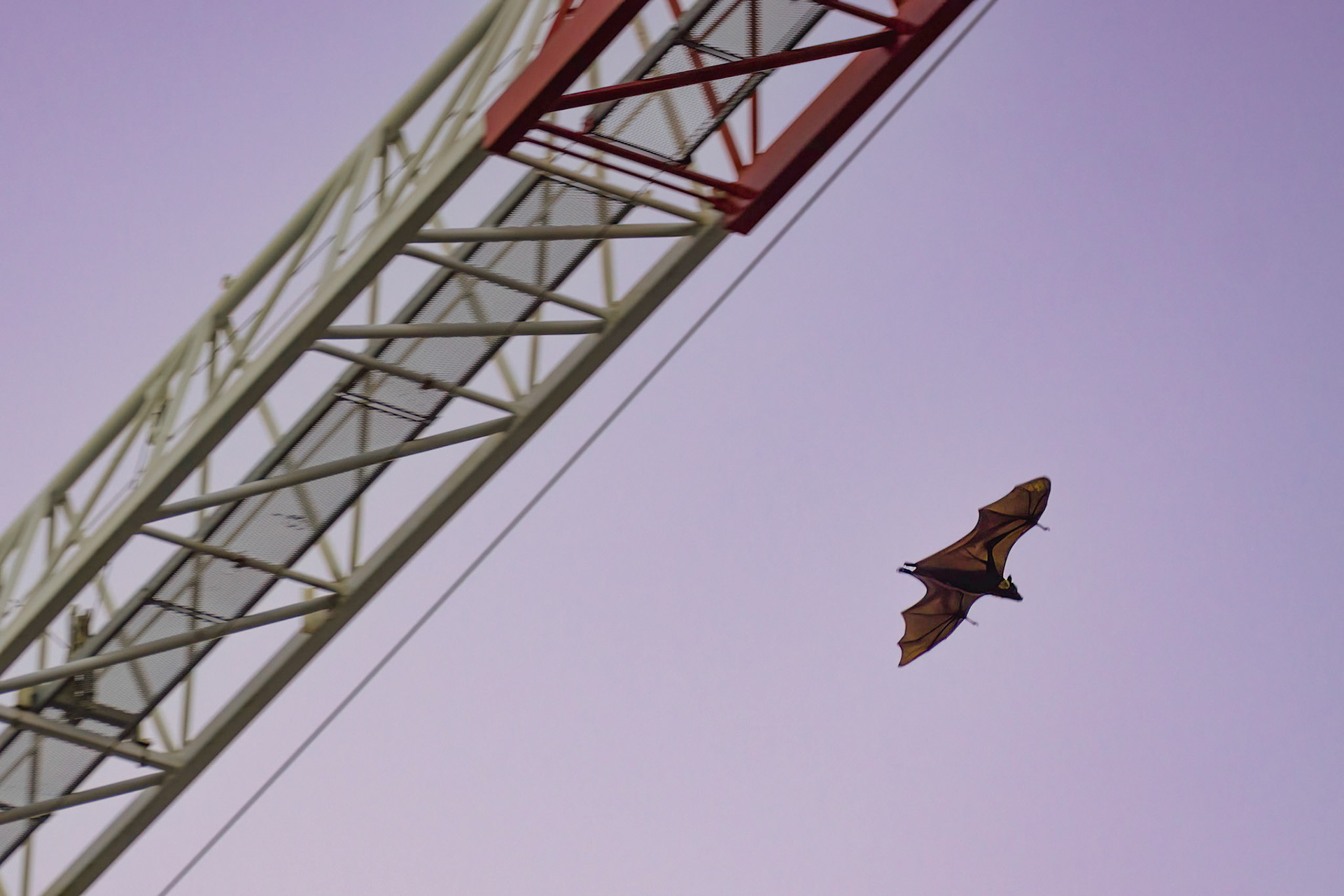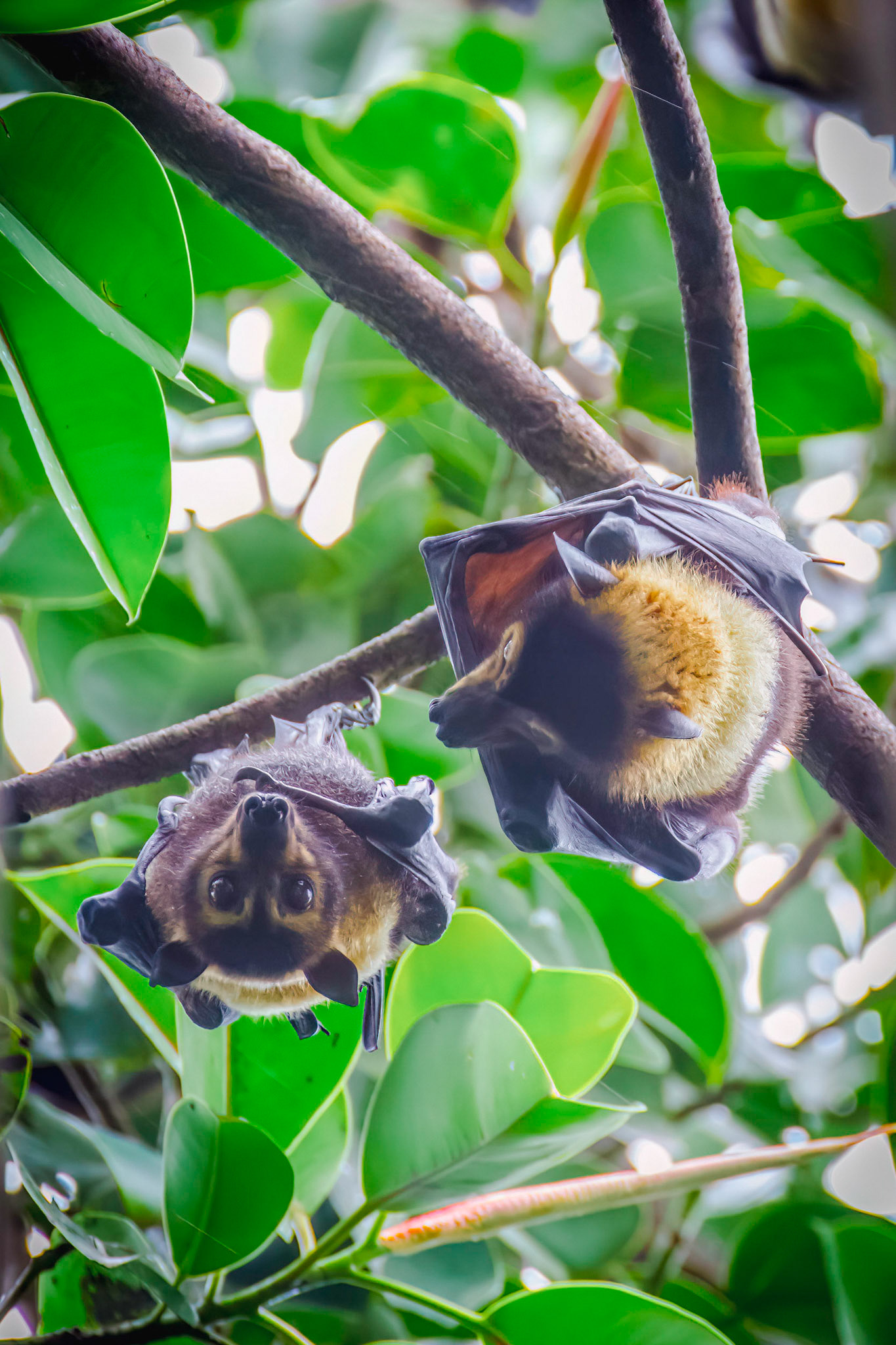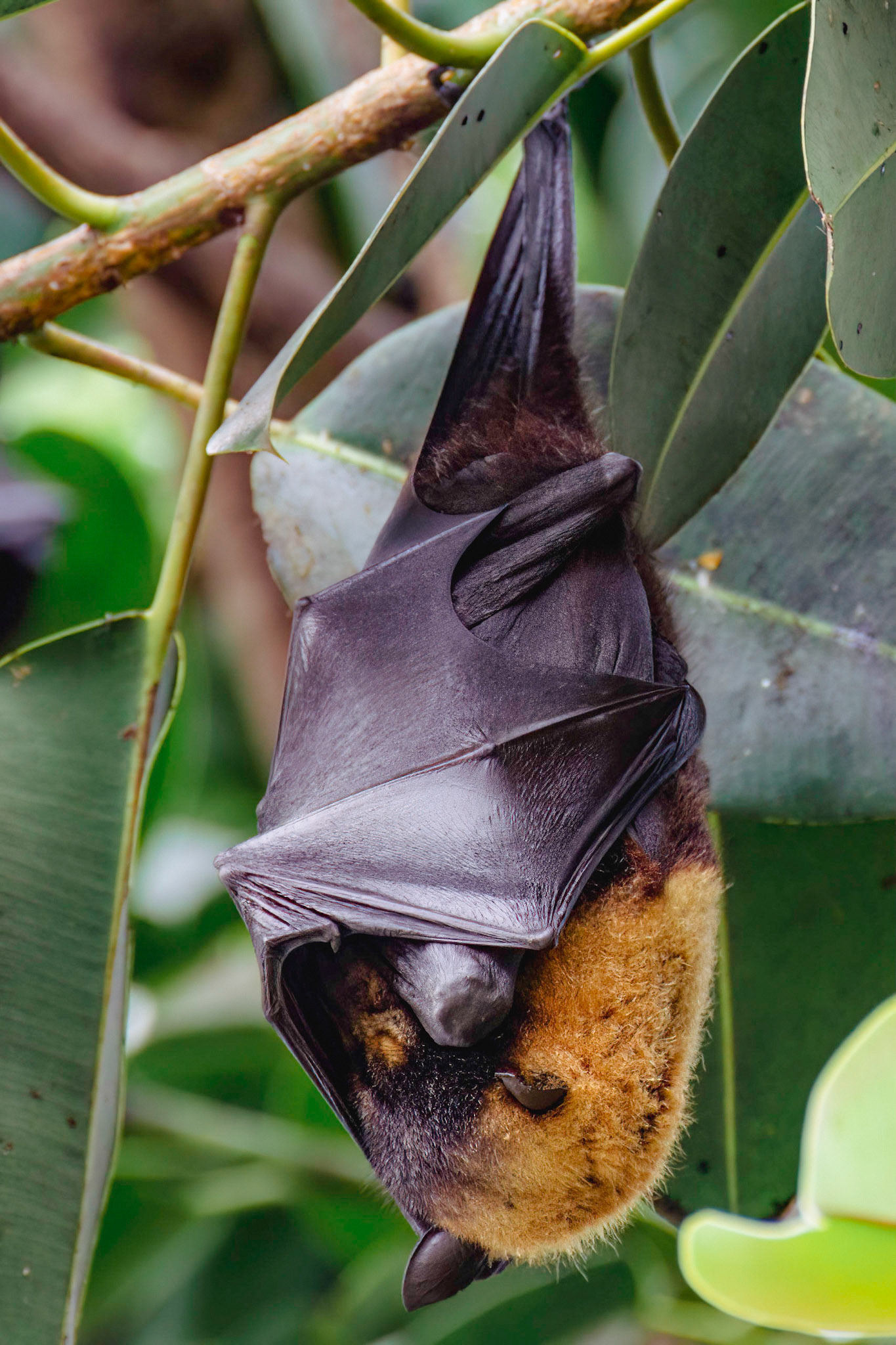








The spectacled flying fox (Pteropus conspicillatus), also known as the spectacled fruit bat, is a huge megabat that lives in Australia's northeastern regions of Queensland. It is also found in New Guinea and on offshore islands including Woodlark Island, Alcester Island, Kiriwina, and Halmahera.
It has been estimated that the population has declined up to 60% over the last decade caused to various human and environmental impacts. The species was classified as endangered by the IUCN in 2020.
In February 2019 the Australian government upgraded the threatened status from vulnerable to endangered after almost a third of the bat population died in a severe heatwave in Queensland in late 2018.
Spectacled flying foxes play a crucial role in the Wet Tropics Australian eco-system. They are one of the most efficient pollinators and seed dispersers of native Australian forest trees.
They are nocturnal mammals which feed on nectar and fruit during the night and roost in trees during the day and are very social animals that live in roosting colonies also called camps.
These pictures were taken from 2014 to 2018 at Cairns CBD, one of the most Nationally Important Camps of the Australian continent located on Abbott and Aplin Street.
The roosting colony was removed and relocated by the council to make room for a brand-new hotel complex. Reasons given during the assessment prior to the relocation mentioned complaints regarding their constant noise, pungent smell and faecal pollution.
The spectacled flying fox was listed as a threatened species under the Environment Protection and Biodiversity Conservation Act 1999.
I have been lucky enough to spend nearly a decade visiting Cairns's tropical paradise. The wondrous spectacle of thousands upon thousands of huge megabats leaving their roosting trees every night at sunset in search of fruits is a challenging experience to match anywhere else in the natural world.